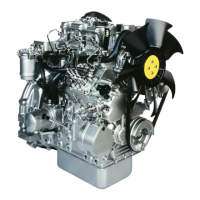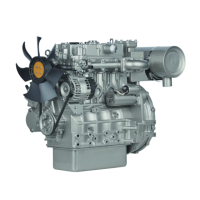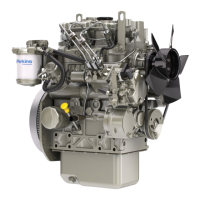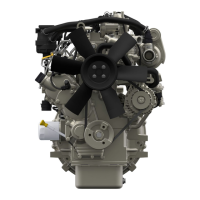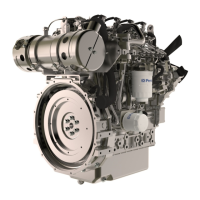
Do you have a question about the Perkins 403D-15T and is the answer not in the manual?
Warnings regarding specific chemicals and potential health risks from exposure.
Guidance on proper storage and use of the operation and maintenance manual.
Introduction to safety precautions and identification of hazardous situations.
Overview of operating techniques and procedures for efficiency.
Introduction to engine care and maintenance schedules.
Explanation of warning signs and symbols for hazard identification.
Covers general safety precautions and potential hazards during operation.
Discusses precautions to prevent burns from hot engine components.
Details hazards and procedures to prevent fires and explosions.
Safety measures to avoid crushing and cutting injuries.
Checks and procedures to perform before starting the engine safely.
Procedures and warnings for safely starting the engine.
Safety precautions related to the engine's electrical system.
Illustrations showing different engine models and key components.
Overview of engine variants, specifications, and general information.
Policies on using non-Perkins parts and accessories with engines.
Guidance on identifying engine serial numbers and models.
Information on engine emission compliance and labeling.
Procedures for safely lifting and storing engines.
Guidelines for storing engines to prevent damage.
Explanation of engine gauges, their function, and readings.
Description of engine features and control elements.
Information on the fuel shutoff solenoid and its function.
Detailed steps for starting the engine safely and correctly.
Procedure for starting the engine using external jump start cables.
Checks and observations to perform after the engine has started.
Best practices for operating the engine for performance and longevity.
Tips to improve fuel efficiency during engine operation.
Procedures for properly stopping the engine.
Use of emergency stop controls and procedures.
Guidelines for operating the engine in cold temperatures.
How fuel properties affect cold weather engine performance.
Components affected by cold fuel and related maintenance.
Table of capacities for engine fluids and systems.
Detailed fuel requirements and specifications for optimal performance.
Information on coolant types, mixtures, and specifications.
Procedures to safely release pressure in various engine systems.
Maintenance procedures for the engine's coolant system.
Maintenance procedures for the engine's fuel system.
Safety and maintenance for high-pressure fuel lines.
Maintenance related to engine oil.
Proper procedures and precautions for welding on engines.
Steps for cleaning and testing the aftercooler core.
Visual inspection of the aftercooler for damage and debris.
Inspection of the alternator for connections and charging.
Checking and adjusting alternator and fan belts.
Procedure for replacing alternator and fan belts.
Steps for safely replacing the engine battery.
How to check and maintain battery electrolyte levels.
Procedures for disconnecting battery cables safely.
Steps to change commercial heavy-duty coolant.
Procedure for changing Extended Life Coolant (ELC).
How to check and maintain the engine coolant level.
Testing and adding Supplemental Coolant Additive.
Procedure for replacing the water temperature regulator.
Maintenance checks for equipment driven by the engine.
Recommended procedures for cleaning the engine.
How to replace the engine air cleaner element.
Inspecting the air cleaner service indicator.
Checking and cleaning the engine air precleaner.
Procedure for replacing the engine crankcase breather.
Inspecting engine mounts for wear and torque.
How to check and maintain the engine oil level.
Steps for changing engine oil and oil filter.
Importance and procedure for inspecting/adjusting valve lash.
Information on testing and changing fuel injectors.
Procedures for priming the fuel system after maintenance.
Steps to replace fuel system filters (canister, element, spin-on).
Replacing the primary fuel filter element and bowl.
Draining water and sediment from the primary filter.
Draining water and sediment from the fuel tank.
Procedures for cleaning the engine radiator.
Identifying and checking for severe service conditions.
Scheduled inspection of the starting motor.
Visual inspection of the turbocharger for issues.
Routine inspection of the engine compartment before starting.
Inspecting the water pump for leaks and condition.
General warranty information.
Specifics about the engine's emissions warranty coverage.
Space to record product identification details.
Space to record dealer contact and service information.




